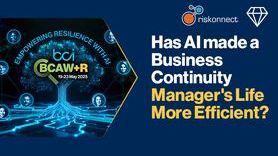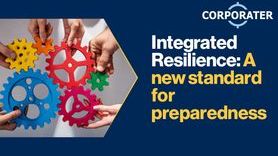Tips for Making the Case for Your Business Continuity Management Program

Facts alone won’t make the case for business continuity management
The risk picture of likely threats disrupting business has sure darkened in recent times: weather-related disasters have increased appreciably; cyber attacks are on the precipitous rise; the ongoing COVID-19 crisis shows no end in sight. And un- (or even under-) prepared companies, particularly small to medium-sized businesses, stand to lose everything.
Still, if you’re trying to get support, sponsorship, and funding for a business continuity management program, you’ll need to make more than an intuitive appeal. What will it take?
Before getting anywhere, business continuity managers will need to demonstrate a clear return on investment (ROI) of the risk mitigation measures they are proposing. They need to link their proposed measures to value creation for the business as a whole.
To do that, business continuity managers should create business cases that illustrate how requested resources will directly address the strategic imperatives that business continuity management practices have traditionally been set up to address. Those imperatives typically include:
- Reduce likelihood of losses by identifying ways to prevent or mitigate threats.
- Ensure compliance by dedicating resources to minimising the risk of compliance violations
- Help retain existing and secure new business by showing customers that their assets will be protected
Define your terms
That’s not all. Leaders don’t always understand what business continuity management is, nor its constituent elements.
In fact, business continuity management, as practiced today, is a holistic management process for identifying potential threats to an organisation and the operational impacts those threats would pose. In turn, business continuity practitioners build durable frameworks for organisational resilience, in compliance with regulations and prevailing business standards like ISO 22301.
That’s typically where the business continuity plan comes in. A mainstay of the practice, business continuity plans are designed and executed to prepare organisations to maintain essential functions in the event of a disaster or other major disruption.
They are collections of resources, actions, procedures, and information, marshalled to ensure continuous delivery of critical services and products to customers. Indeed, the business continuity plan has two principal objectives:
- Ensuring critical operations continue to be available
- Minimising impacts to the business, irrespective of the type of incident or disruption
Getting the aims of your business continuity program under control
As such, the aims of your requested business continuity resources shouldn’t be expansive. Instead, the resources should solely address the organisation’s most critical functions.
To do so, you should have a conversation with stakeholders; what qualifies as business critical and therefore in scope for the project? Part of building a successful business case is understanding who those primary stakeholders are and finding out what their requirements are.
Also, steer clear of some of the landmines that undermine business continuity programs. For one, business continuity often gets dismissed as an auditory function, rather than a value- and revenue-creating function that aligns with the business’s larger objectives.
To counter, the best business cases directly lay out how business continuity management makes a proactive intervention in the lifecycle of critical products and services, as the sole function with a clear map of all of business units, activities, and resources (more broadly) that support the delivery of critical products and services.
That map then helps senior management quantify its appetite for risk (including precise enumerations of acceptable downtimes), should there be disruptions to critical products and services. Any downtimes exceeding the prescribed become in-scope for the function.
Of course, crafting a successful business case takes more than that. You will still need to include the relevant assets that reflect the context of your organisation. Not sure how to create one? Download Noggin’s free guide to developing a business case for business continuity management to find out more.







































